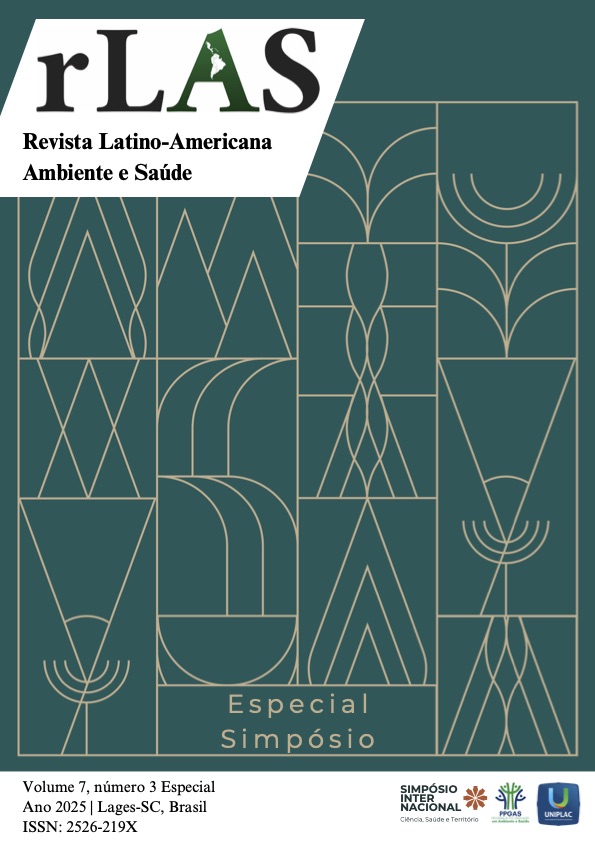In vitro sensitivity of Colletotrichum lindemuthianum race 81 subjected to dynamised high dilutions
Keywords:
anthracnose, phytopathogens, homeopathyAbstract
Common bean is vulnerable to pathogens such as Colletotrichum lindemuthianum, the causal agent of anthracnose, which limits the agricultural expansion of this crop. This study aimed to evaluate the control potential of C. lindemuthianum race 81 using dynamised high dilutions (DHDs). The experiment was carried out at the Laboratory of Homeopathy and Plant Health of EEL/Lages, in a completely randomized design with six treatments: Nitric acidum, Silicea terra, Calcarea carbonica, Phosphorus, and Kali bichromicum, all at 12 CH (centesimal Hahnemannian dilution), and sterilized distilled water as control, with five replicates. The experimental unit consisted of a Petri dish (9 cm diameter). Treatments were applied in 20 µL aliquots directly onto the mycelium-colonized disc of C. lindemuthianum placed in the center of the dish. Mycelial growth was evaluated by measuring the colony diameter, and data were expressed as the area under the mycelial growth curve (AUMGC) and the Mycelial Growth Rate Index (MGRI). Data were analyzed using Tukey’s test at a 5% probability level, with R software. Kali bichromicum showed the lowest AUMGC value (41.50), compared to sterilized distilled water (45.75) and Nitric acidum (47.00). No significant differences were observed among treatments for the MGRI. Although all treatments allowed complete colonization of the plates within 10 days, the results suggest that DHDs may interfere with the mycelial growth of C. lindemuthianum race 81 and represent potential sustainable alternatives for phytopathogen management.
References
ANDRADE, F.M.C.; CASALI, V.W.D. Homeopatia, agroecologia e sustentabilidade. Revista Brasileira de Agroecologia, v. 6, n. 1, p.49-56, 2011.
BELLO, T.C.D.; BOFF, M.I.C.; BOFF, P. Altas diluições dinamizadas e Trichoderma sp. como antagonistas no desenvolvimento do fungo fitopatógeno Monilinia fructicola. Cadernos de Agroecologia. v. 19, n. 1, 2024.
BRILLOUIN, L. Science and Information Theory. 2a ed. Columbia University: Editora Dover Publications, 2013.
CAPRA, F.; LUISI, P.L. The system view of life: a unifying vision. 1ª ed. Nova York, Editora Cambridge University, 2014.
CASTELLI, L.S.; FARIA, N.B.; SILVA, A.M.C. Exposição aos agrotóxicos em cidade de intensa atividade do agronegócio e desfechos gestacionais diversos. Journal Health NPEPS, v. 7, n. 2, 2022.
CHIKRAMANE, P.S. et al. Extreme homeopathic dilutions retain starting materials: a nanoparticulate perspective. Homeopathy. v. 99, n. 4, 231–242, 2010.
GAMA, E.V.S. et al. Homeopathic drugs to control red rot disease in sisal plants. Agronomy for Sustainable Development. v. 35, n. 2, 649-656, 2015.
KOKORNACZYK, M.O. et al. Droplet evaporation method as a new potential approach for highlighting the effectiveness of dynamized high dilutions. Complementary Therapies in Medicine. v. 22, n. 2, 333–340, 2014.
MODOLON, T.A. et al. Mycelium growth of early tomato blight pathogen, Alternaria solani, subjected to high dilutions preparations. Biological Agriculture & Horticulture. v. 31, n.1, 28-34, 2014.
NUNES, M.P.B.A. et al. Relationship of Colletotrichum lindemuthianum races and resistance loci in the Phaseolus vulgaris L. genome. Crop Science. v. 61, n.1, 3877–3893, 2021.
R CORE TEAM. R: A language and environment for statistical computing. R. Foundation for Statistical Computing. <https://www.R-project.org>. 2022.
RISSATO, B.B. et al. Esporulação e crescimento micelial de Fusarium solani tratado com medicamentos homeopáticos. Cultivando o Saber. v. 9, n. 3, 391-400, 2016.
WENDLAND, A. et al. Manual de identificação das principais doenças do feijoeiro-comum. 2018. Disponível em: <https://www.infoteca.cnptia.embrapa.br/infoteca/handle/doc/1102266> Acesso em: 26 out 2021.
WIT, J.P. et al. Integração de métodos físicos e biológicos para o controle de doenças e pragas em lírios e espatifilo. In: BETTIOL, W.; MORANDI, M.A.B. Biocontrole de doenças de plantas: usos e perspectivas. Embrapa, Jaguariuna-SP, c. 200, p. 330-335, 2009.


